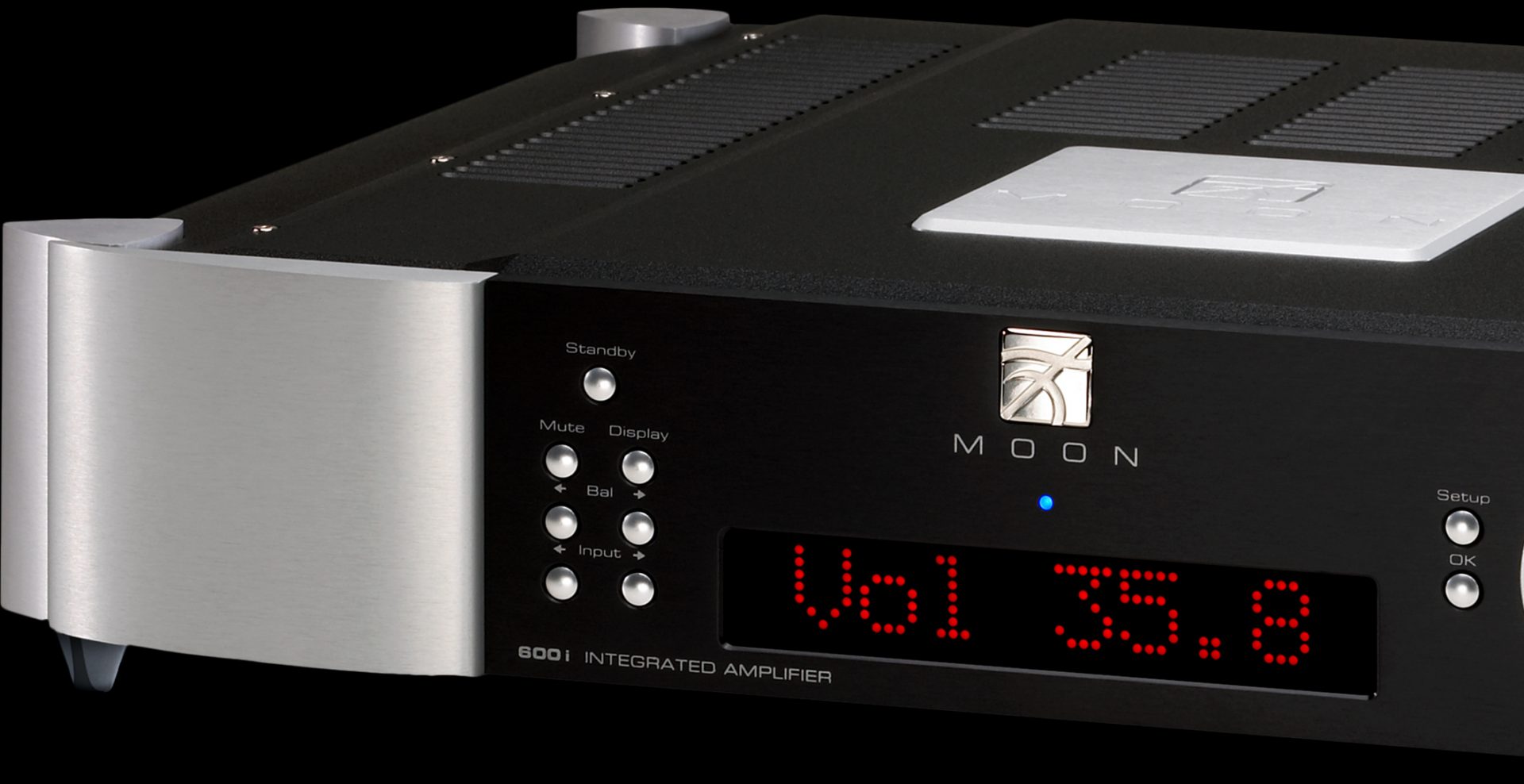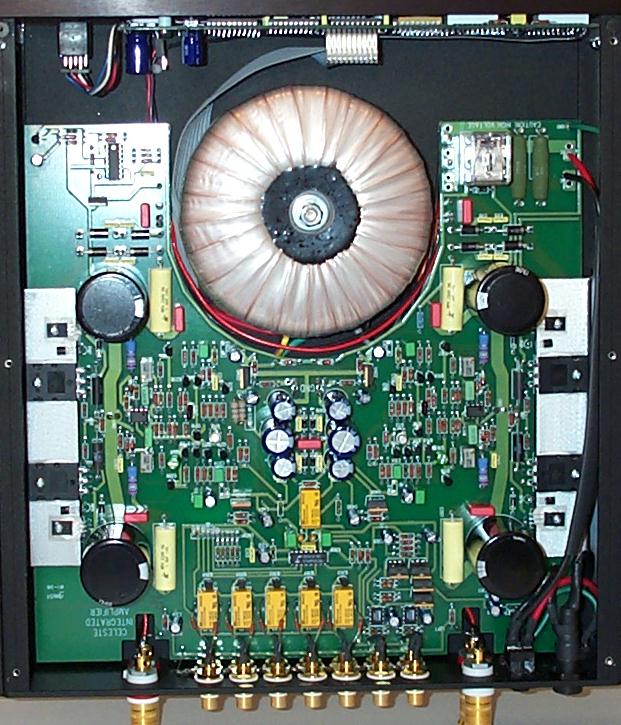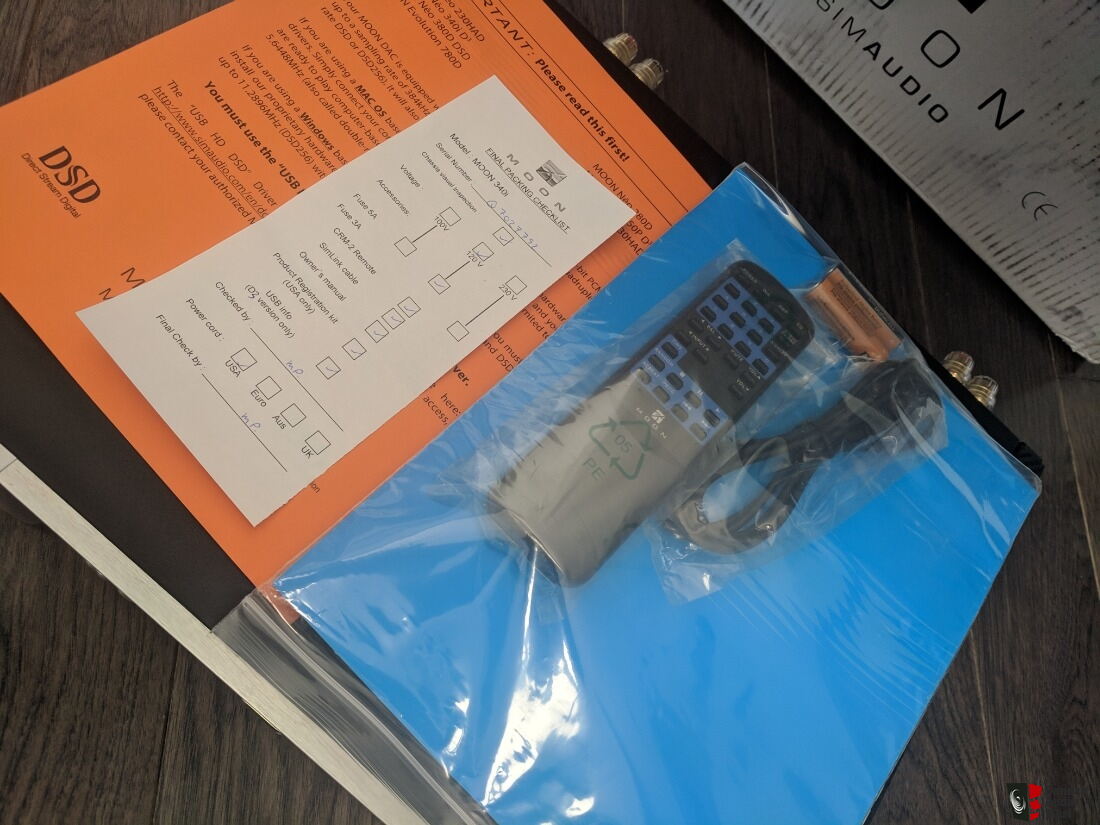June 2020
Simaudio Moon 250i: $1800 The 50Wpc Moon 250i (originally i-1), built in North America, has five pairs of single-ended line-level inputs, a front-mounted minijack for personal media players, a headphone jack, and a preamp output. The all-aluminum chassis is rigidly built to minimize external vibrations, but there are no external heatsinks. In the May 2015 issue, I fairly raved about Simaudio's Moon Evolution 740P line-stage preamplifier, and now here I am confronting its Moon Evolution 860A power amp. The two are companion models of sorts, with prices of $9500 for the 740P, $15,000 for the 860A—and for much of the time I spent listening to the 740P it was hooked up to the 860A, so some of the descriptions of sound in this.
Simaudio Moon 680D Streaming DAC
Great build quality, great looks, greatsound.
Review By Will Wright Of Positive Feedback
Simaudio recently introduced a new streaming digital to analog converter to their Moon product line. The 680D ($9000) streaming DAC slots in somewhere between the 780D v2($15,000), and the 280D ($3000). As with many, if not most of the products in the Moon series, the 680D has the same width and depth (18.75 x 16.8 inches) only varying in height. Additionally, it shares other cosmetic touches in industrial design, including the heat sinks on the side panels, height adjustable aluminum feet at the four corners, and a rather massively built chassis with a shipping weight of 38 pounds. This means that Moon series products can be easily stacked. There are three cosmetic options, including all black, all aluminum, or two tone black with aluminum. I personally prefer the two tone option.
Oracle VM VirtualBox Extension Pack. Free for personal, educational or evaluation use under the terms of the VirtualBox Personal Use and Evaluation License on Windows, Mac OS X, Linux and Solaris x-86 platforms. When you plug the device into your USB, Windows will look for the associated driver, if it cannot find this driver then you will be prompted to insert the driver disc that came with your device. Common USB Device errors are ‘ usb port not working ‘, ‘device descriptor request failed error’ or ‘bugcodeusbdriver’ issues. Oracle usb devices driver download. The TAR archive contains the latest 12.1.0.1 JDBC Thin driver (ojdbc7.jar and ojdbc6.jar), Universal Connection Pool (ucp.jar), other companion jars, and README that has more information about the contents of the tar file. 64-bit Oracle Data Access Components (ODAC) Downloads. Important: The 32-bit Oracle Developer Tools for Visual Studio download is required for Entity Framework design-time features. Windows paravirtual (PV) drivers are high-performance network and disk drivers that significantly reduce the overhead of the traditional implementation of I/O device emulation. These drivers provide improved network and disk throughput to run fully virtualized Windows guests in an Oracle VM Server for x86 environment.
For those unfamiliar with Simaudio, this Canadian company was founded in 1980 under the name Sima Electronics and focused on Pro Sound equipment. In the 1990s Sima Electronics was reorganized into Simaudio Ltd and shifted its focus to consumer electronics. The Moon Limited Edition series was established in 2004, the company's 25th anniversary.
Features
Utilizing the MiND 2 app, the 680D is a Roon ready device and includes MQA Technology. The 680D features nine digital inputs including USB, AES/EBU, threeS/PDIF, two optical, Bluetooth, aptX, and Ethernet. It supports native DSD up to DSD256 and PCM up to 384kHz. This dual-mono design is powered by Moon Hybrid Power, a high performance supply using conductive polymer capacitors, high speed digital switching, and analog linear regulators. There are also two stages of low noise DC regulation, four stages of independent inductive DC filtering, a very short signal path using a DC servo circuit, and proprietary 18dB per octave analog filtering. There is a RS-232 port for firmware updates, a 12 Volt trigger output for remote operation, and an IR input for external control. For those that feel the internal supply to be inadequate, the 820S external supply can be added for an additional $8000. If you will be using the 680Ds USB input with a Windows computer you will need to download the driver from the Simaudio website.
Simaudio Control4 Driver

The front panel display window indicates the selected digital input, its corresponding sample rate frequency of the source material currently being played, and/or assigned input label. To the left of the display are four buttons. They are Standby, Display, Up, and Down input selection. Standby disengages all outputs from the rest of the 680D's circuitry and turns off the display but leaves digital and analog circuitry powered up. The Display button allows three levels of brightness or off. Even in the off position the display will still light up briefly whenever any buttons are pressed. To the right of the display are four more buttons used for customization of the numerous software functions available. They are Setup, OK, Up, and Down. For each of the nine inputs you can assign a label, or disable the input completely if not in use. I won't cover every possible customization here. Check the website for more info. The 680D includes an excellent user's manual with detailed instructions on customization.
The back panel is comprised of connections for the balanced and single ended analog outputs, the nine digital inputs, 12V trigger input, IR input, Simlink in/out, RS-232 port, the IEC power input, on/off switch, and twoWi-Fi antenna connections. A very nice remote is included that offers most of the front panel functions plus additional features for use with other Simaudio products.
The 680D uses the ESS ES9028PRO chipset in a fully balanced differential configuration. Dynamic range and signal to noise ratio are both listed as 123dB, and intrinsic jitter is one picosecond RMS. These are excellent specs, and my listening experience with the 680D leads me to believe them.

Setup And Listening
The 680Ds chassis is built more like a power amp. It is very solidly constructed and beautiful to behold. The heatsinks on the side are likely there to cosmetically match it to the other components in the Moon series. During the review period the top of the chassis never got above room temperature. I used the 680Ds balanced analog outputs to connect to my preamp. The first thing I noticed in my initial listening session was less output than I was expecting. A quick look at the specifications page in the user's manual confirmed that both the single ended and balanced outputs were rated the at same output voltage. In a true balanced circuit the output voltage is usually double the single ended output. Ultimately, this only affected the position of the volume control.
Although I tried a lot of the various streaming features to confirm their functionality, my primary listening to the 680D was via its USB input connected to my music server. Through that input I was able to play upconverted audio files at the DACs native rate of 352.8/384kHz for PCM. I also tried native DSD, although I usually run DoP (DSD over PCM) from my server.
The user's manual recommends a burn-in period of 400 hours. Initial listening confirmed the need for it. I ran the 680D continuously with the Purist Audio Design System Enhancer disc on repeat for a micro fortnight. Oem cameras. The next reviewer in line won't have to go through that. My hard work was ultimately rewarded as the 680D opened up. Spoiler alert: This DAC sounds great!


Pace, Rhythm, and Timing were first rate. The 680D could really boogie when called upon. When the music was lively you had to be on your feet. It sure made me dance. The 680D also had a knack for mining the gold out of recordings. For instance, when playing one of those early CD transfers that sound so hard and flat at times, the 680D could pull out content and detail that helped rescue the listening experience. It didn't make bad recordings good, but it made them more listenable. No matter what material you threw at it, the 680D was unfazed and always composed.
The 680D had excellent clarity and definition. Bass articulation and extension in particular were superb. At this juncture, it ranks as the best bass reproduction I've heard in my system. Midrange and treble were also clear and distinct, the sound never becoming hard, brittle, edgy, aggressive or analytical unless the music was. Both male and female vocalists were free of sibilance or chestiness. Piano music was reproduced with good balance between body and string tone if the recording permitted. The overall tonal balance of the 680D was even, with no spotlighting of any particular frequency range.
Imaging was also well done by the 680D. For instance, studio recordings where the instruments and vocals are panned to specific locations in the mix were easily deciphered by this DAC. Each object had its own cocoon of space within which macro and micro detail, tonality, and texture were all revealed. This made it easily possible to focus on a specific instrument and follow it through the mix. The 680D also captured the air and ambiance of live recordings, realistically portraying the venue and crowd sounds. The soundstaging of the 680D was compact with reasonably good width and depth, but a perspective slightly more distant than my reference.
Simaudio Drivers
As one would expect from the excellent specifications hiss, noise, and distortion were essentially nonexistent. Dynamics were first rate, going from a whisper to a roar with equal clarity and definition retaining the dynamic envelopes of individual instruments even during climaxes. There was little or no change in perspective with signal level.
Conclusion
Great build quality, great looks, great sound. Who could ask for anything more? In case you missed it, I loved this DAC. If the 680D falls within your budget, you should definitely check it out. It took me a couple of weeks after the departure of the 680D before I could readjust to my system without it. As far as I'm concerned, the only thing wrong with the 680D is that it is no longer here.
Specifications
Type: Hi-Res Audio digital-to-analog converter
Frequency Response: 2Hz to 100kHz (+0/-3dB)
THD: 0.0005 %
Intermodulation Distortion: 0.0003 %
Dynamic Range: 123 dB
Signal-To-Noise Ratio: 123 dB @ full output
Channel Separation: 120 dB
Intrinsic Jitter: 1 pico seconds RMS
Analog Output: 2.0 V
Analog Output Impedance: 100 Ohms
PCM Bit-Depth: 16 to 32 bits
PCM Sampling Frequency: 44.1 to 384 kHz
DSD: DSD64, DSD128 & DSD256
Dimensions: 18.75' x 4' x 16.8' (WxHxD)
Price: $9000
Manufacturer
Simaudio Ltd.
1345 Newton Rd.
Boucherville, Quebec, J4B 5H2
Canada
Voice: (450) 449-2212
Website: www.SimAudio.com
Simaudio’s MOON high-resolution USB interface is designed using a new digital input board using the highly regarded XMOS XS1 microprocessor as an input receiver, allowing for fully asynchronous data communication. All MOON 650D’s and 750D’s manufactured from this point forward will be equipped this High-Resolution USB interface. For units manufactured prior to November 2011, a straightforward in-the-field upgrade path can be performed by an authorized MOON retailer or distributor; This entails a simple PCB swap which requires no soldering or firmware updates – the new board uses all existing mounting hardware and connectors.
Besides the increased bit-depth and sampling rate for USB data input, several design enhancements have led to an overall improvement in the sonic performance of the S/PDIF, AES/EBU and optical digital inputs. Effective immediately, MOON Evolution Series 650D and 750D DAC/CD Transports will now accept data streams up to, and including, 24-bit/192kHz on all digital inputs.
Significant Design Features:
Simaudio Drivers
• USB 2.0 audio interface using the XMOS XS1-L1 event driven microprocessor for bit perfect audio data up to 24-bit/192kHz with fully asynchronous clocking to help achieve virtually non-existent jitter
• Supports sampling rates of 44.1, 48.0, 88.2, 96, 176.4 and 192kHz with bit depths from 16 to 24
• Simple in-the-field upgrade path for MOON 650D’s and 750D’s manufactured prior to November 2011
• Native support for MAC OS-X and Linux based computers (no device driver requried)
• Easy to install Thesycon driver available at simaudio.com for Windows 7, Vista & XP based computers.
The MOON 750D with High-Resolution USB will have an MSRP $13,000.00 USD. The MOON 650D with High-Resolution USB will have an MSRP $9,000.00 USD. Existing MOON 650D’s & 750D’s can be upgraded to High-Resolution USB for $1,000.00 USD
For more info, please visit www.simaudio.com.
Related Posts
Leave A Comment
Simaudio Usb Driver

Simaudio Moon Usb Driver
You must be logged in to post a comment.
